#narrow margin 1990
Explore tagged Tumblr posts
Text
youtube
youtube
Two great Gene Hackman films (and Enemy of the State)
0 notes
Text
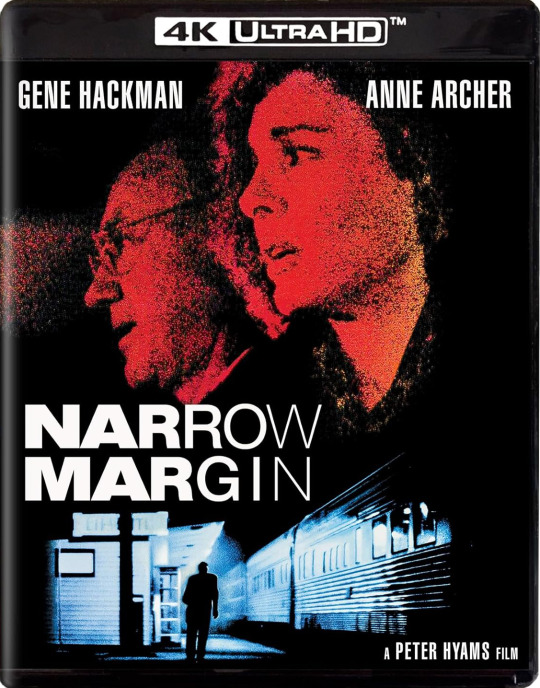
Narrow Margin will be released on 4K Ultra HD + Blu-ray on June 18 via Kino Lorber. The 1990 neo-noir action thriller is a remake of the 1952 film of the same name.
Peter Hyams (End of Days, Timecop) writes and directs. Gene Hackman and Anne Archer star with James B. Sikking, J.T. Walsh, and M. Emmet Walsh.
Narrow Margin was previously restored in 4K by StudioCanal. Special features are listed below.
Disc 1 - 4K Ultra HD:
Audio commentary by writer-director Peter Hyams
Audio commentary by film historian Peter Tonguette
Disc 2 - Blu-ray:
Audio commentary by writer-director Peter Hyams
Audio commentary by film historian Peter Tonguette
Making-of featurette
B-roll and sound bites
Theatrical trailer
Gene Hackman (The Package) stars as an L.A. District Attorney attempting to take an unwilling murder witness (Anne Archer) back to the United States to testify against a top-level mob boss. Frantically attempting to escape two deadly hitmen sent to silence her, they board a Vancouver-bound train only to find the killers are onboard with them. For the next 20 hours, as the train hurls through the beautiful but isolated Canadian wilderness, a deadly game of cat and mouse ensues in which their ability to tell a friend from foe is a matter of life and death.
Pre-order Narrow Margin.
#narrow margin#peter hyams#gene hackman#anne archer#90s movies#1990s movies#neo noir#90s action movies#kino lorber#dvd#gift#jt walsh#j.t. walsh#m. emmet walsh#m emmet walsh
13 notes
·
View notes
Text
Narrow Margin (1990) Movie Review
Narrow Margin – ABC Film Challenge – Thriller – N – Narrow Margin – Movie Review Director: Peter Hyams Writer: Peter Hyams (Screenplay) Writer: Martin Goldsmith, Jack Leonard (Story) Cast Gene Hackman (The French Connection) Anne Archer (Fatal Attraction) James Sikking (The Pelican Brief) J.T. Walsh (Needful Things) M. Emmet Walsh (Knives Out) Plot: A Los Angeles Deputy District…
0 notes
Text

Saturday, May 10, 2025 • 9 p.m. EST: Michael Crawford, Mary D'Arcy & Reece Holland (L.A. 1990)
OK so I miscalculated and this week's stream poll technically doesn't end until tomorrow, but as of right now the OG OG is ahead by a narrow margin, so that's who we're watching! This is a surprisingly decent boot for its age, and it will probably destroy you.
As always, the stream will be on cy.tube and shy anons are welcome. For more info, please see the Saturday Streams FAQ! Link and password will be posted here at 8:45.

92 notes
·
View notes
Text
This article was produced as part of JTA’s Teen Journalism Fellowship, a program that works with Jewish teens around the world to report on issues that affect their lives.
“How does it feel to be on the wrong side of history?” These were the words flung at a student wearing a Star of David necklace by a leader of one of Binghamton University’s LGBTQ+ clubs.
When the visibly shaken student found Myles Resnick, in the Hillel office, Resnick, a queer peer leader, empathized. Tensions were escalating on campus following the narrow passage of a boycott, divestment and sanctions resolution against Israel on campus last April. But the hurled comment stung Resnick because it came from a friend of his who led an LGBTQ+ organization Resnick was active in.
This exchange reflects the growing rift between LGBTQ+ activists and Jewish students, many of whom feel increasingly isolated by the strong pro-Palestinian stance within queer organizations. At Binghamton, support for BDS from LGBTQ+ groups, including the university’s Rainbow Pride Union, mirrors a broader national trend of queer groups aligning with the pro-Palestinian cause.
These groups include No Justice No Pride, ACT UP NYC, National Queer Asian Pacific Islander Alliance, and Black and Pink, allof which have taken public stances deeply critical of Israel and Zionism since the Hamas attacks of Oct. 7, 2023 and the subsequent war. Many queer Jewish teens who once looked to these groups for solidarity and support now feel marginalized by their positions. Disagreeing with the organizations’ statements, they say they feel ostracized from the broader LGBTQ+ community. For these already vulnerable teens, the shift has deepened their sense of isolation and alienation.
Sophia Barenholtz, a senior at a high school in Essex County, New Jersey, has found herself feeling increasingly unsafe and unwelcome in her own LGBTQ+ community. “I have definitely noticed the tendency for LGBTQ+ organizations to take an anti-Zionist, and often antisemitic, stance on the Israel-Hamas War,” she said. “It has made me feel unsafe and unwanted in my own community, and has me questioning the integrity and critical thinking skills of my LGBTQ peers.”
Barenholtz said that she finds it disappointing that a community that values open-mindedness and understanding won’t consider the voices of queer Jews asking for Israel to be given a chance.
“Instead of engaging in meaningful dialogue, some people have called me antisemitic slurs, sent me death threats, and wished for me to impose unspeakable harm upon myself,” Barenholtz said. “It’s especially unfortunate that these remarks have come from members of my school’s LGBTQ+ organizations and members of the LGBTQ+ community.” Barenholtz’s school district is currently under a federal investigation for an unspecified allegation of bias related to the disputes between Muslim and Jewish students
Meanwhile, accusations against Israel of “pinkwashing” highlight another wedge within the community. Israel, which advocates describe as a haven for LGBTQ+ people, decriminalized same sex relations in 1988 and passed many anti-discriminatory laws to protect LGBTQ+ individuals in the 1990s. Critics claim the country uses LGBTQ+ rights and promotes these positions to obscure its treatment of Palestinians. Israel’s defenders point to the harsh treatment of LGBTQ+ individuals in Gaza and neighboring regions, including Egypt and Lebanon. In 2016, a Hamas leader was tortured and executed after being accused of being gay, according to a report in the left-leaning Haaretz.
On Oct. 7, the one-year anniversary of the Hamas terrorist attack on Israel, the New York City-based Anti-Violence Project, an LGBTQ+ defense group, issued a statement accusing Israel of “genocide.” A Wider Bridge, which promotes ties between LGBTQ+ groups in America and Israel, called the statement inflammatory and unhelpful, and said it reflected a “callous indifference to the human suffering experienced” on Oct. 7 and after, “particularly by LGBTQ Jews in New York City.”
Shir Levenson, a Jewish LGBTQ+ high school junior from Long Island, said that pro-Palestinian stances from LGBTQ+ groups make her feel disconnected. “When these groups take such extreme positions, it makes me feel like I don’t belong,” she said. Levenson explained that she’s unfollowed influencers and celebrities, including Matt Bernstein and Reneé Rapp, because of what she calls their anti-Israel and pro-Palestinian narrative. “I thought they’d recognize the truth and support Israel, which is more accepting of LGBTQ people, rather than places where we’re persecuted,” she said. “Their extreme positions, like accusing Israel of genocide, don’t acknowledge the humanity on both sides.”
JTA reached out to ACT UP NYC for comment but received no response. The group’s website accuses Israel of genocide and states that “Israel bombs Queers,” while also criticizing GLAAD, a leading LGBTQ+ media monitoring group, for not taking a stance on the conflict. GLAAD, which has faced criticism for its partnership with the Antidefamation League, released a statement in October expressing sympathy for all those affected by the conflict and calling for an end to antisemitism and Islamophobia. Pro-Palestinian advocates boycotted GLAAD’s 2024 awards, an event that celebrates LGBTQ+ trailblazers.
Some within the LGBTQ+ Jewish community do not feel this tension. Avi Chesler, from Huntington, New York, said he feels comfortable in LGBTQ+ affinity spaces. He blames the natural divisions that the issue causes, and laments “some of my Jewish community’s [inability] to acknowledge Palestinian suffering alongside Israeli suffering, despite the constant pain for all affected that so many members of the community feel.”
Jewish Voice for Peace, an anti-Zionist organization, links LGBTQ+ liberation with broader social justice goals, including justice for Palestinians. “At JVP, we understand that all people’s liberation is intertwined, and we work towards a world where everyone is safe and free,” media coordinator Liv Kunins-Berkowitz said. “Our commitment to LGBTQ+ rights is inextricably linked with ending genocide, occupation, apartheid, and militarism, which endangers queer people across the world. Queer liberation in Palestine is only possible in a free Palestine.”
Other Jewish groups remain committed to supporting LGBTQ+ youth while acknowledging the pain on both sides of the conflict. “LGBTQ+ Jewish youth deserve, always, to feel genuine belonging as their full, authentic selves,” Keshet, a Jewish LGBTQ+ organization, wrote in a statement to JTA.
“Especially since the attacks against Israel on October 7th and the ensuing war in Gaza — with ongoing loss and suffering for both Israelis and Palestinians, we have seen an increase in painful division and hate,” wrote Jamie Krass, Keshet’s director of youth programs. “In these times, it is particularly critical that queer Jewish youth have access to affirming community, without needing to leave any parts of their identities at the door.”
Amelia Mamlet, a queer, Jewish and openly Zionist high school senior from New Jersey, felt the growing tension firsthand. “I’ve noticed that a lot of LGBTQ+ organizations I once followed have taken pro-Palestinian or even anti-Israel stances. It makes me feel unseen,” she said. Mamlet described her discomfort watching liberal groups that she once supported adopt strong anti-Israel positions. “I’m more liberal myself, but when I see these organizations being anti-Israel, it feels like I can’t stand with them, even though I agree with so many of their other ideologies,” Mamlet said. “It leaves me feeling like there’s no place for someone like me.”
Mamlet said LGBTQ+ organizations should focus on supporting queer individuals rather than taking divisive political stances on international conflicts. “We’re already vulnerable. These spaces are supposed to protect us, not alienate us further.”
Mia Rubenstein, a sophomore at Tufts University, once considered the LGBTQ+ Center on her campus a safe space. “Before the conflict, the Q Center felt welcoming,” she said. As part of a pre-orientation LGBTQ+ advocacy group, Rubenstein found comfort there. “But after October 7, they publicly supported Palestine, and it made me feel really uncomfortable.” The center ran events with Students for Justice in Palestine, or SJP, and Rubenstein noticed the group following SJP on social media while showing no support for Jewish or pro-Israel groups.
“It felt like you had to be LGBTQ and pro-Palestine to be welcomed. You couldn’t just be LGBTQ without also subscribing to their political stance,” she said. This realization left her feeling disconnected from a community she had invested time in.
Resnick, the Binghamton student, felt a similar shift when LGBTQ organizations, such as the Rainbow Pride Union, a queer student club, endorsed a BDS resolution in April. Though Binghamton’s official LGBTQ+ center didn’t take an official position, its leadership expressed anti-Israel views and continued to run events with groups such as the Rainbow Pride Union.
“The president of the Rainbow Pride Union used to be a close friend, and now I’m literally blocked on Instagram,” he said. After voicing support for Israel and speaking out against the BDS resolution, Resnick faced backlash from his peers. “I released an article to share at the [BDS] hearing, and after that, I was slammed by people who were very involved in the queer community.”
“That was the moment [when] it all sort of clicked for me. This isn’t just something we’re tiptoeing around. This is something that’s really important to me, and it made me feel like I can’t be in that space if I disagree,” he said.
60 notes
·
View notes
Note
Curious, who's your favorite turtle in each iteration?
With every iteration it's always one or both of the A Team, Leo and/or Raph XD But if I were forced to choose between them, knowing the other is a runner up by a veeery narrow margin:
1987: Leo
1990: Raph
2003: Leo
2007: Raph
2012: Leo
Rise: Raph
Although sometimes my tastes will flip them on a rewatch. Just depends what kind of mood I'm in, I guess!
16 notes
·
View notes
Quote
Despite his popular vote win in 2024, Trump knows his margin of victory was relatively narrow, and fueled by a massive anti-incumbent backlash among millions of voters not particularly grounded in the MAGA ideology. Trump’s policy choices are likely to have a powerful negative effect on large segments of the population that voted for him, raising the prospect of Republicans themselves facing anti-incumbent headwinds at the next elections. That may be why Trump has tasked Elon Musk’s DOGE with planning a new, centralized attack on the electoral system. It’s not a new campaign – reversing the racial inclusivity of the Cold War era has been part of the GOP playbook since the 1990s, the racist dog-whistle of “voter fraud” being the fiction invoked to justify massive purges of mostly Black and Brown voters from the rolls. But DOGE promises new levels of efficiency in the task.
'Democracy with American Characteristics' is what brought us here
9 notes
·
View notes
Text


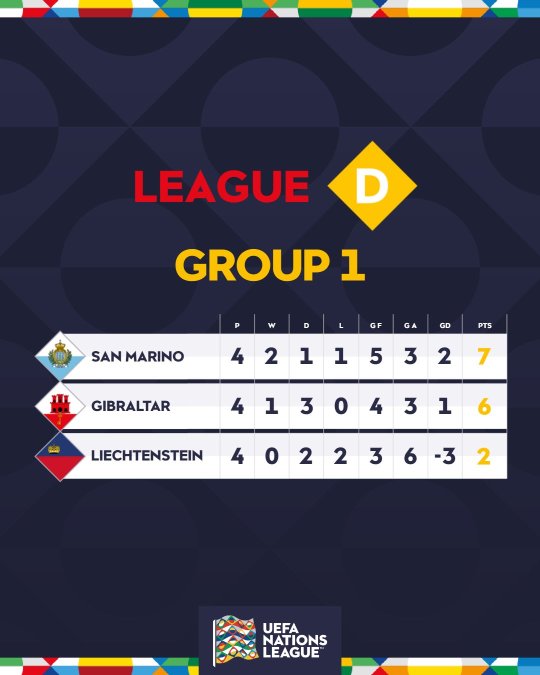
THEY'VE DONE IT, THE MAD LADS HAVE DONE IT
After a 20-year winless streak, that finished last September 5th after a 1-0 victory against Liechtenstein at home in the town of Serravalle, it seemed that it was the biggest joy the San Marino national team, known as the "worst national team in the world of football" could get.
But today, they wrote the biggest page of their footballing history, that goes back to their first official match in 1990 against Switzerland and was constantly filled with harsh defeats, mainly because of the fact that, having a population of around 30.000 inhabitants, the resources are limited, and they mostly can only count with amateur or semi-pro footballers.
Until this edition of the UEFA Nations League, they had only ever won one friendly match, 1-0 against Liechtenstein on April 28th, 2004.
After the before mentioned second win in the Matchday 1 of the Group D1 of the Nations League, they suffered a defeat by a narrow margin of 1-0 against Gibraltar on Matchday 2, but they overcame it by achieving a last-minute 1-1 draw last Friday, in their third game of the group stage, reaching the last matchday against Liechtenstein in the capital Vaduz with chances of being promoted to League C. That would be, undoubtedly, the biggest feat in Sammarinese footballing history.
And indeed, it was. After a stunning middle distance shot from the Liechtensteinian midfielder Aron Dele during the first half, the hopes for the Sammarinese seemed to be waning.
But right after the beginning of the second half, a great play left the midfielder Lorenzo Lazzari in front of the box, and he didn't hesitate to put the ball in the net to put things back even and get his first goal ever with the Nazionale shirt. In the 66th minute, a penalty was awarded to San Marino and the striker Nicola Nanni safely exchanged it for a goal.
It was the first ever time in history that San Marino was coming back from a defeat, and that historical comeback was sealed by one of the Sammarinese legends, Alessandro Golinucci, to put the final result of 3-1 in favor of the Titani.
After the final whistle, the feat was celebrated with the always faithful Brigata Mai 1 Gioia (San Marino's tireless supporters group) as if they had been champions of the world, and rightfully so.
Aside from the historic promotion to League C, they achieved:
-their FIRST EVER away win
-their FIRST EVER comeback
-their FIRST EVER TIME scoring three goals in the same match
-their FIRST EVER TIME winning two matches in a UEFA competition
-(still not confirmed, but very likely) escaping the dead last spot of the FIFA ranking
Closing this with a personal note. As a supporter myself, for the last 10 years, this feels truly like winning the World Cup. The almost unsurmountable level difference between these guys and the big European teams might make most people think "is it even worth it? It's a team of clerks and accountants, which are clearly inferior in virtually every aspect of the game, playing against professional footballers playing in the top leagues".
But once you start noticing the sacrifice, the struggles they make to represent their home country, no matter how small, always with dignity and honor despite the adverse results, you realize this means the world to them. And to everyone of us who can feel identified with their struggles. And tournaments like the Nations League give the opportunity to these teams to play against similarly ranked teams, and achieve more feasible and positive results. It just makes it all worth it.
And after all these years of waiting, I can assure you all, it was worth all the wait to enjoy this feat, for everyone. For the players, for the managers, for the federation, and for the fans, who felt touched by their story and took the decision to support them from everywhere in the world, no matter the uncountable defeats, the infinite frustrations and the incommensurable helplessness.
TODAY, SAN MARINO WON, WAS PROMOTED, AND MADE HISTORY. Today, the world of football is a better place.
FORZA SAN MARINO 🇸🇲🇸🇲🇸🇲
8 notes
·
View notes
Text

Narrow Margin, Hungarian Lobby Card. 1990
6 notes
·
View notes
Text
Nerdy Pet Peeves
AKA things that people say about the Flash and the Rogues that bug me when found in supposedly-informative lists or videos.
"Barry/Wally is an inferior copy of Wally/Barry!" This one is usually just a lead-up to an internet flame war, and ignores that the two characters are both distinct, interesting, and likable in their own right. It's also just objectively not true (except when applied to adaptations, which have a bad habit of blending the two characters together). This isn't to say that people can't like one better than the other, or even dislike one, but to claim that either character is objectively unworthy of being the Flash/existing is a bit much.
"Barry was/is boring." I like Wally a lot (he is my favorite Flash, although by an extremely narrow margin), but I can't agree with people who claim that Barry is boring, or was boring before the retconned-in death of his mother. He wasn't. As white-bread as he seems, Silver/Bronze Age Barry Allen was a deeply weird individual. He had weird friends (like Albert Desmond, an ex-supervillain, and his 12-year-old neighbor), weird and dorky hobbies (collecting comics being the most notable), and did very weird things (like dressing up as a supervillain basically just to troll the Rogues, which @gorogues has some good scans of). He also has a solidly-written relationship with Iris (at least in the Bronze Age; not so much in the Silver Age) and actually has a number of really solid and emotional stories. I think a lot of the reputation Barry has as being boring stems from the fact that Cary Bates' run on the character, which did a lot to establish his more idiosyncratic character traits and emotional range, isn't published in reprints very often. As such, most modern fans don't know about Barry as he was written in that time period, and miss out on his more interesting character beats. Although I may be biased by the fact that I love Silver and Bronze Age comics.
"Captain Cold is a knock-off Mr. Freeze." Even setting aside the massive differences in their appearances, personalities, and backgrounds, Captain Cold debuted in 1957. Mr. Freeze didn't appear as Mr. Zero until 1959, and didn't become the Mr. Freeze most audiences are familiar with now until BTAS in the 1990s. So if anyone is a knock-off, it's Mr. Freeze, not Captain Cold (though the two are very distinct and I don't think either of them is a rip-off).
"Heat Wave is a knock-off Firefly." Again, the two are massively different in appearance, personality, and backstory, and, while Firefly does technically predate Heat Wave, he didn't start using a flamethrower until the early 1990s, at which point Heat Wave had been around---using his heat gun---for nearly 30 years. Before that, Firefly had light-based powers.
"Trickster is a second-rate Joker." Different powersets, different backstory, totally different personality, and different goals. Trickster is a barnum and a showman; Joker is a twisted comedian. Just because they're both vaguely humor-themed does not make them the same character.
"Heat Wave is boring/didn't age well." I've seen this opinion in a few different places, and it baffles me. Heat Wave is plenty interesting. He had a bit of a rough patch in the New 52, but other than that he's pretty consistently had good stories, his character has been firmly established, and his backstory is really interesting (and suitably grimdark for those people who think comics need to be "mature"). Is it just because his costume is mostly kind of monochrome? Or because his heat gun isn't as flashy as some of the other Rogues' weapons?
"Trickster is the Flash's Joker/a homicidal maniac." This one is basically entirely the fault of adaptations, which do keep turning the Trickster (specifically, James) into the Joker in all but name. In the comics, the Trickster is many things, but he is not a homicidal maniac. It's one of the things that separates him from the Joker. I love Mark Hamill (even as the Trickster), but he's not playing the Trickster from the comics, and it bothers me when people apply the traits of the TV Tricksters to their comic counterpart.
"Captain Boomerang is lame/stupid." Does it make total sense that a normal guy who throws boomerangs can fight the Flash? No. Does it matter? No. This is comics we're talking about; they're inherently kind of silly. That's what makes them so fun---and why Captain Boomerang is so great. Also, Digger is way more skilled, more deadly, and more ruthless than he gets credit for. He's actually one of the scariest Flash villains when his back is to the wall. @gorogues, you probably have some good scans of impressive Digger feats. Also, if you apply the logic used to judge Captain Boomerang as lame, then characters like the Joker are also, objectively, kind of lame.
"Ha ha ha, the Top spins! LOL! What a stupid villain." He has telekinetic powers and tried to blow up half the world in his first appearance. Plus, he's a ghost who can possess corpses, and can be downright terrifying when he wants to be. I don't know why people have such a hard time taking him seriously. It's not like his costume is that much weirder than Sinestro's. Or Lex Luthor's purple-and-green battle armor. Thankfully, this one does seem to have become less common than it used to be.
Similarly, "ha ha, the Golden Glider skates! That's silly!" In the Bronze Age, Lisa was the scariest Rogue of them all, and arguably came the closest to achieving her goals. The fact that she ice skates does not negate the fact that she was absolutely deadly, and would have fit right in with the darker modern era of comics. And her costume's not even silly looking! This opinion seems to have become less common of late, but unfortunately it has, in part, been replaced by....
"The Golden Glider is the nicest of the Rogues/nicer than her brother." This one is the fault of the comics themselves, since they've been writing her this way for about a decade at this point. So this one is less a criticism of people online and more a criticism of DC's writing decisions for the Golden Glider. Lisa is more than Captain Cold's cute little sister. She is capable of functioning on her own, and this perception of her as being nothing but generally cute and nice (and led into crime by her brother!) kneecaps her as an independent character. The fact that Cary Bates, who was writing during the 1970s and 1980s, is still Lisa's best writer is a little sad.
People who confuse/conflate Eobard Thawne and Hunter Zolomon, or describe Zolomon as though he's the version from the 2014 TV show rather than the more nuanced character from the comics. This happens more than it should, especially in lists and videos that are supposed to be explaining the Flash, and it just adds fuel to the fire that is people confusing them.
"The Rogues were lame until Geoff Johns started writing them." Geoff Johns was a great writer for the Rogues, and did develop a lot of their backstories, but the Rogues were just as great in the Silver and Bronze Ages, and Roscoe and Lisa were actually much better in that era than under Johns' pen (especially since Johns hated Roscoe). There are tons of good Rogues stories from earlier eras, and I think that they're vital to understanding the characters (especially poor Sam, who has had maybe three good stories since he was brought back to life in 2011).
"Captain Cold is the only Rogue that matters." This usually isn't stated precisely in this way, but I see this general sentiment quite frequently. This idea seems to assume that the Rogues are Len's henchmen, rather than his teammates, and therefore that they aren't interesting or important in their own right. Some of this can be laid at the feet of Geoff Johns, who really, really, really loved Len and seemed to not put as much time or effort into characterizing the other Rogues. I also think Joshua Willaimson's run was rather bad about this, as it portrayed Len as a pretty absolute, selfish leader and seemed to imply that the other Rogues were evil primarily because of his orders/influence. Even Johns' run didn't do that!
"The Rogues are only a threat to the Flash as a group." Again, this one can probably be attributed at least in part to the fact that most modern comic runs never show the Rogues operating independently, but historically they were all threatening and capable in their own right when fighting the Flash. Teaming up made them more threatening, but they were capable on their own.
"Sam (the first Mirror Master) is boring." This one is kind of true, but only if it's in reference to the post-Flashpoint version of the character. Pre-Flashpoint Sam, who also frequently gets called boring, was the most dynamic Rogue in the entire Pre-Crisis era, and was anything but boring. He was showy, cocky, dynamic, clever, and extremely entertaining. Silver/Bronze Age Mirror Master is the most fun you can have reading Pre-Crisis Flash.
People who confuse Evan and Sam, or Axel and James. Admittedly, DC hasn't been helping matters any by combining them into weird hybrids so much, but when writing an informative list about Sam, one should make sure that you're not including backstory elements than only apply to Evan, and that you're not attributing some of Evan's more violent activities, addictions, or eldritch powers to Sam. Similarly, when talking about the Trickster, make sure that you don't give Axel's backstory to James (or vice versa).
"The Rogues are lame/joke villains/aren't capable of fighting the Flash." This opinion isn't nearly as common as it once was, but it still pops up from time to time. It's as though the Rogues' costumes and names are preventing people from realizing that they're very capable combatants.
21 notes
·
View notes
Text
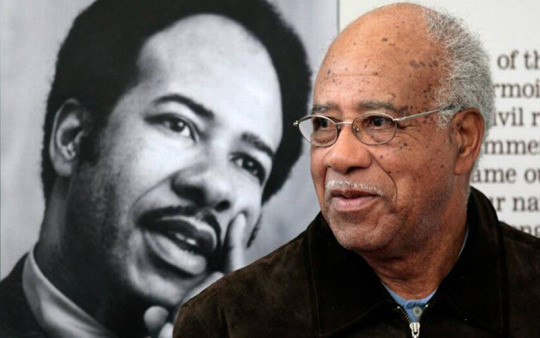
Mayor Howard Nathaniel Lee (born July 28, 1934) is a politician who served as Mayor of Chapel Hill, North Carolina (1969-75). He was the first African American mayor elected in Chapel Hill, and the first African American to be elected mayor of any majority-white city in the South.
He was born to Howard Lee and Lou Temple outside Lithonia, Georgia. He began his freshman year at Clark College, he graduated from Fort Valley State College.
He was drafted into the Army during the summer of 1959 and completed basic training at Fort Benning. He received medical corpsman training at Fort Sam Houston, before being stationed at Fort Hood. He organized two sit-ins in the town of Killeen to protest segregated public facilities. The second sit-in was reported back to Fort Hood, and he was stationed in Korea the next week.
He moved to Savannah, Georgia, where he served as a juvenile probation officer, and married Lillian Wesley (1962). They moved to North Carolina in 1964, where he earned an MSW from UNC Chapel Hill. He joined the faculties of Duke University and North Carolina Central University.
In February 1969, he announced his mayoral candidacy. The ensuing election saw a record 4,734 votes cast. He won by a narrow margin but was re-elected twice.
In 1976, He sought the Democratic Party nomination for Lieutenant Governor of North Carolina. He was defeated in the primary runoff. He was appointed as the Secretary of the North Carolina Department of Natural Resources and Community Development.
He was elected to the North Carolina Senate (1990-94 and 1996-2002). He concentrated particularly on issues affecting public education.
The North Carolina State Board of Education elected him as its chairman. He was appointed as the new executive director of the NC Education Cabinet. He had to give up his seat on the Board of Education. He served as a member of the North Carolina Utilities Commission. He and Lillian Lee were nominated as “Town Treasures” by the Chapel Hill Historical Society He founded the Howard N. Lee Institute, which “focuses on erasing the achievement gap and improving academic performance for minority males.”#africanhistory365 #africanexcellence
2 notes
·
View notes
Text
Take A Hike
It has been a rocky year for many companies, thanks to their visible support of marginalized groups of customers. In our supposedly enlightened times, there are still people who find it difficult to just overlook what they don’t like. When I saw news of REI’s recent new unisex clothing line, I knew there would be an uproar.
Not because I wanted to see one. I just knew it would happen, because the outdoor equipment and retail company used verbiage that was bound to upset some. When you use words like “nongendered,” you know what’s going to happen next.
And boy howdy, did it ever. I checked REI’s Facebook page, and there were a lot of minds exploding, people threatening never to come back, and overuse of the laughing face emoji. Cue the over-reactors, and prepare ye to duck.
Naturally, there were people who did not read the attached article that explained their rationale. It’s not like they are making the entire store nongendered. Not at all. They will still have men’s clothing and women’s clothing. But they will also have a small line of activewear that is aimed at both, not in a shoving-down-your-throat kind of way that detractors love to decry, but just simple recognition that some things truly can be unisex.

As I have made clear before, I love REI. We just shopped the Orlando store yesterday, several hours before I stumbled upon this news item. I had even remarked to my wife about some hydration running vests about why would there even need to be men’s and women’s versions, other than possibly color variations. Oh, the cultural influences here. We have color-coded so many things, but all arbitrarily.
Now before I continue, I do recognize there are numerous biological differences between the sexes, and it is possible that women, whose shoulders tend to be narrower than those of men, might truly need a somewhat down-sized running vest. I get that. The same goes for backpacks, the kind needed to do the Appalachian Trail, as my sister-in-law is preparing to do this summer. And I also know that when it comes to pants, our builds are very different.
But what if it is just running clothes, like shorts and t-shirts? REI has gone out of its way to allay sizing fears by showing on a chart exactly what each item’s size might mean if you are a man or a woman.
REI is known for its popular #optoutside hashtag, as well as being among the first retail chains to stay closed on Black Friday. It urges both its employees and customers to go take a hike or something fun, rather than dive into the stress of holiday shopping. But the chain has also faced headwinds of late, and has endured two rounds of layoffs as it battles to maintain profitability.
I love REI’s store operations. Their liberal return policy means I can return something up to a year later, even if I have used it. The 10% patronage dividend for members is a great bonus. Currently, it costs $30 for a lifetime membership to get this benefit. I have been a member since the 1990s, and don’t remember if it even cost anything to join then. I just get my annual dividend every February, and then go shopping again, which is precisely the kind of store loyalty they seek.
The takeaway, once again, from the current uproar is that no matter what you do in the digital era, it is humanly impossible to please everyone. Furthermore, since the chasm between left and right is widening, it means you are going to get some negative reactions that are just vulgar. And, that kind of hatred can come from either side of the aisle.
I wish REI well with this new line of clothing. I also hope they can survive their current problems. They are striving to do good things, and if ever I see them or anyone else doing something with which I disagree, I will lean back onto my mantra: If you don’t like what you’re seeing, don’t look.
As for the current naysayers, I think they too should take a hike. Holler at me if you ever want some company. Just leave the negativity at home.
Dr “It’s Time To Roll” Gerlich
Audio Blog
3 notes
·
View notes
Text
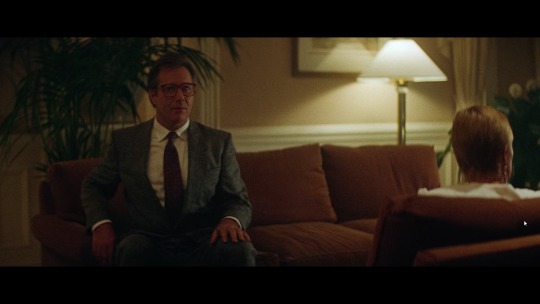
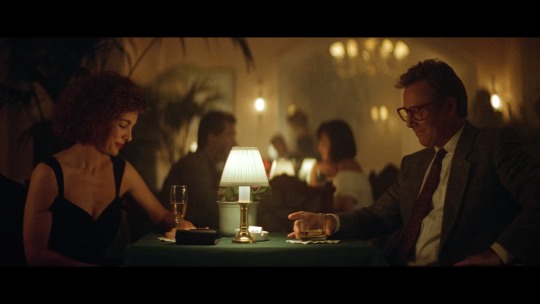
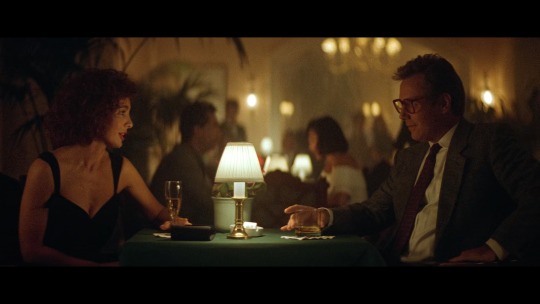
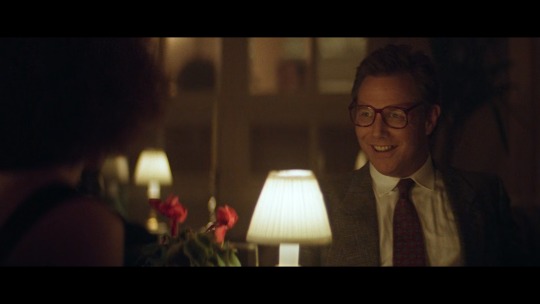
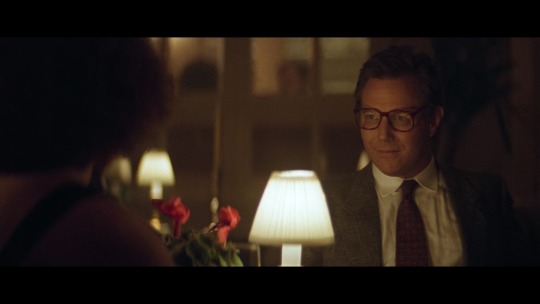
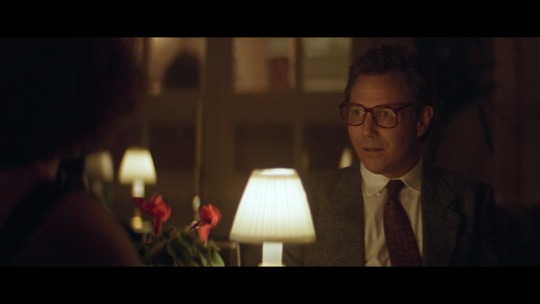
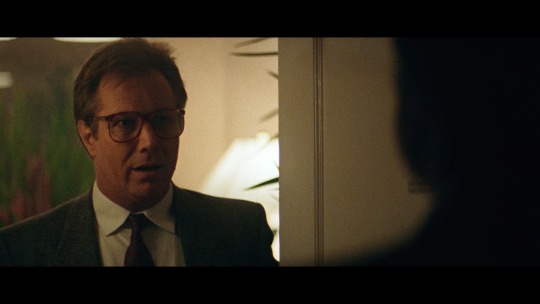
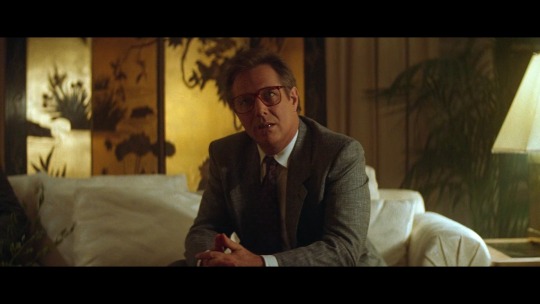
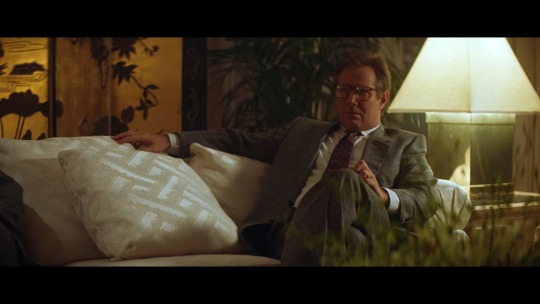
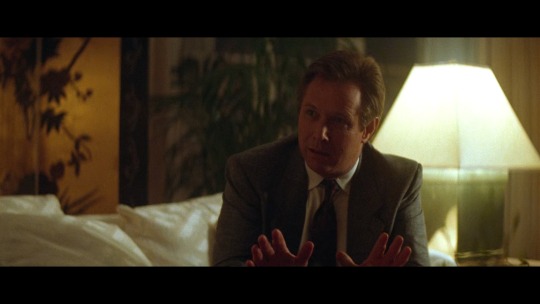
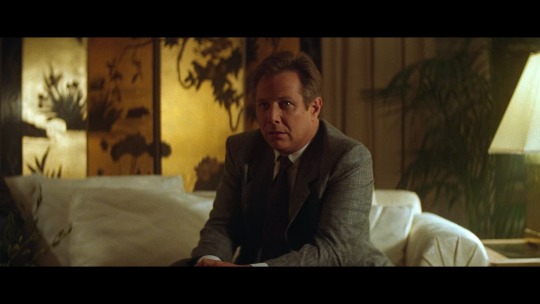
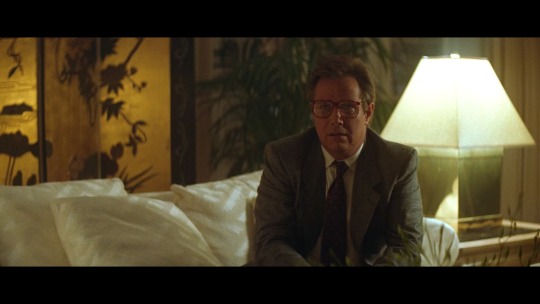
J.T. Walsh as Michael Tarlow in Narrow Margin (1990).
He looked good. I do love it when he wears a red tie. He was so softly spoken in this film, however briefly he was in it.
4 notes
·
View notes
Text
While I hold significant criticisms of the Republican Party, particularly the faction aligned with the MAGA movement, I believe the Democratic Party is equally ineffective. There is a pressing need for a viable third political party that commands comparable power and recognition to the existing two-party system, complete with its own primary processes. Furthermore, I advocate for the elimination of substantial financial contributions within the political framework and the abolition of the Electoral College in favor of a straightforward popular vote system. In this system, the candidate with the highest number of votes—regardless of how narrow the margin—would emerge victorious. This approach would promote more transparent and accountable elections. America must embody true democracy—government for the people, by the people, and of the people.
The frustration people feel about politics reflects a long-standing issue: both major parties often seem to cater to the same powerful interests. This problem began to escalate during Reagan’s presidency in the 1980s when policies focused on less government regulation and tax cuts allowed big money to play a bigger role in politics. This shift led to an increase in corporate lobbying and weakened rules on campaign financing, especially after the Supreme Court's Citizens United decision in 2010.
Politicians like Bernie Sanders and Alexandria Ocasio-Cortez criticize the influence of wealthy individuals in politics, but they work within a Democratic Party that has had several opportunities to make real changes. Since the 1990s, Democrats have controlled Congress and the presidency at different times—under Clinton, Obama, and Biden—but they haven't significantly tackled the systems that enable this influence.
For example, during Obama’s first two years, Democrats had a strong majority in Congress. They could have pushed for public funding for campaigns, reversed tax cuts for the wealthy, or addressed corporate control directly. Instead, we mostly saw the Affordable Care Act, which improved healthcare but didn't seriously challenge the power of money in politics. The financial bailouts after the 2008 crisis also did little to hold Wall Street accountable. Similarly, Clinton's time in office led to agreements like NAFTA and the 1996 Telecom Act, which further strengthened corporate power. Biden has managed some infrastructure spending, but hasn’t tackled major issues like reversing Citizens United or breaking up monopolies.
The reason for this inaction lies in how politicians are funded. Both Democrats and Republicans depend on large donations from big companies and wealthy individuals to run their campaigns. While Sanders and Ocasio-Cortez speak out against billionaires, they are still part of a system that relies on their financial support. Their events may attract large crowds, but they aren't suggesting drastic changes, like creating a new political party or changing the Constitution to eliminate private money in politics—changes that could genuinely challenge the existing system.
Data shows that Democrats raised over $1.6 billion for the 2024 elections, with many contributions coming from the same wealthy sectors that support Republicans. The effects of Reagan’s policies are still felt today, with the wealthiest 1% seeing their share of income increase dramatically. Despite the loud rallies and speeches, without real action to disrupt the influential system, it all feels like just a show—different faces, but the same underlying issues.
0 notes
Text
How to Get E-Rickshaw Dealership in India?

Are you trying to search How to Get E-Rickshaw Dealership? Electric rickshaws are a more recent variation on the traditional motorized rickshaw. There is a downside to traditional fuels like gasoline and diesel; they harm the environment, whereas electric rickshaws use batteries, which emit no pollution
Getting an E Rickshaw business is not difficult. To find an electric rickshaw manufacturer in India, you should contact multiple companies and evaluate their performance based on factors like brand recognition, quality of E Rickshaws, after-sales support, and dealer margins. You must meet the minimum requirements set by the electric rickshaw manufacturer and supplier company in India. If you want to start an e-rickshaw business in India, this is the perfect location.
Specifications of an E-Rickshaw
What is the main difference between an e-rickshaw and a standard automobile or manual rickshaw? An e-rickshaw is a vehicle that meets the standards of the 2014 and 2015 motor vehicle laws.
The three-wheeled, battery-powered special-purpose vehicle can only carry four passengers (excluding the driver) or 40 kilograms of luggage in total.
The maximum motor capacity is 4000 watts and the maximum speed limit is 25 km / hr.
The Evolution of the E-Rickshaw Industry
According to data, there were 1.5 million electric rickshaws on Indian roads in 2018, more than the entire number of electric autos sold in China in 2011.
This increase in population didn’t happen overnight. It took many years for it to happen. Even before sustainable transportation became mainstream, the e-rickshaw started to capture people’s hearts. The NARI in Maharashtra wanted to build the world’s first electric rickshaw in the late 1990s. The primary reason for the project was to modify manual rickshaws. NARI designed a pedal-powered rickshaw.

The Advantages of an E-Rickshaw
Easy to maintain:-
The maintenance costs for electric rickshaws are far lower than for auto-rickshaws. The vehicle’s spares are available from any location, based on the requirements.
This product is easy to connect to other devices:
E-rickshaws are great for rural areas with narrow roads. E-rickshaws are used for travelling to large towns and cities in rural and local areas. It has a wider turning radius, making it better suited for high traffic locations.
Possibilities for economic growth:
An estimated one million and a half electric rickshaws are in use on Indian roads, generating employment.
There are over a million and a half electric rickshaws in use on Indian roads, which has resulted in increased job opportunities.
An estimated one million and a half electric rickshaws in use on Indian roads, which has resulted E- rickshaws are great for rural areas with naaow roads. E-Rickshaws are great for rural areas with narrow roads. E-Rickshaws are used for travelling to large towns and which has generating employment. There are over a million and half electic rickshaws on Indian roads to large towns it has a wider turning radius making it.
Why would you want to start an e-rickshaw business in India?
If you’re not convinced that electric rickshaws are the next big thing in India, here are some data from multiple studies that demonstrate their performance and potential growth.
In India, about 11,000 electric rickshaws are bought each month.
It is anticipated that sales will increase by 9% in 2021.
The electric vehicle industry in India is dominated by e-rickshaws. They account for 80% of the market.
In 2024, around 935,500 units are expected to have been sold.
So, if you are already committed to starting this business, let’s talk about the prerequisites and techniques to do it.
Dealership criteria for e-rickshaws
Requirements for space
A VLE must have seating for at least 3 to 4 people.
All facilities for men and women, including guest water, a first aid box, and a Type-A fire extinguisher, are considered basic amenities.
It is important to hire someone with the right technical training and strong marketing abilities.
Dealership for e-rickshaws and e-scooters
Rs. 2, 00, 00/ (Two Lacs) security for two vehicles for E-Rickshaw
Rs. 1, 00, 00 (Two Lacs) security for two cars for e-scooters
VLE will get the dealership within 30 days due to the lengthy TC and setup process. Still, the process will be faster than that of other vendors.
What documents are required for the operation of an e-rickshaw?
CSE must get the following documentation from VLE.
1. Demand draught
2. CSE dealership form
CSE will want the following papers from the service provider.
1. Vehicle registration
2. Insurance certificate
3. Warranty information
Service level agreement (SLA)
#E garbage van manufacturer in india#e rickshaw manufacturer and supplier company in india#Electric rickshaw manufacturer in india
0 notes
Text
The Evolution and Impact of Beauty Standards
In a world increasingly shaped by media and technology, beauty standards have taken on a life of their own, influencing how individuals view themselves and others. These standards, though ever-changing, often reflect the cultural, societal, and even political climate of the time. But as they evolve, their implications for self-esteem, identity, and diversity have become more profound.
A Historical Perspective on Beauty Standards
Beauty standards are not new; they date back to ancient civilizations. In ancient Egypt, symmetry and kohl-lined eyes were the epitome of beauty, while the Renaissance era celebrated fuller figures as symbols of wealth and fertility. Fast-forward to the 20th century, and the ideal fluctuated from Marilyn Monroe’s curvaceous figure to the waif-like aesthetic of the 1990s, popularized by supermodels like Kate Moss.
These shifts reflect changing societal values, but they also highlight how exclusionary these ideals can be. More often than not, these standards represent only a narrow slice of humanity, leaving many to feel marginalized.

The Role of Media and Social Platforms
Today, media—particularly social platforms like Instagram and TikTok—plays a pivotal role in shaping beauty standards. Filters, photo editing apps, and curated feeds set a high bar for "perfection." While these platforms offer opportunities for self-expression, they also amplify unrealistic expectations.
The pressure to conform can lead to harmful consequences, including body dysmorphia, low self-esteem, and a growing obsession with cosmetic enhancements. Studies show that young people, especially teenagers, are particularly vulnerable to these effects.
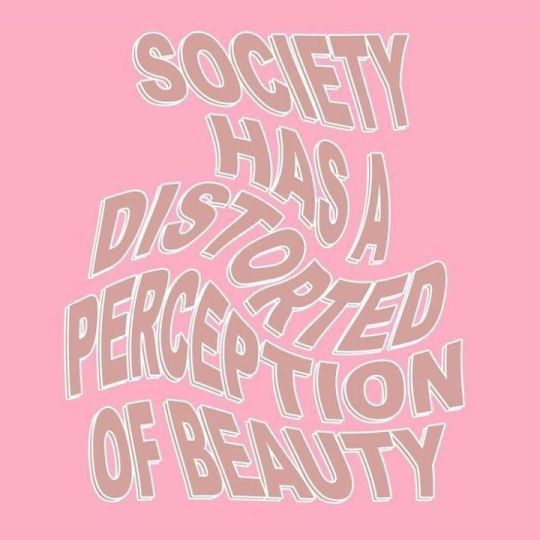
A Growing Emphasis on Inclusivity
In recent years, there’s been a significant push toward inclusivity and diversity in beauty. Brands are broadening their product ranges to include all skin tones, and campaigns now feature models of all sizes, ages, and abilities. Movements like body positivity and skin positivity are gaining traction, challenging traditional norms and celebrating authenticity.
The Path Forward
To counteract the negative impact of beauty standards, education and media literacy are crucial. Individuals must learn to differentiate between curated images and reality. Moreover, continuing to celebrate diverse definitions of beauty will help dismantle harmful stereotypes and encourage a healthier relationship with appearance.
As we navigate a world dominated by visuals, the key lies in embracing individuality and fostering environments that celebrate everyone’s unique beauty.
1 note
·
View note